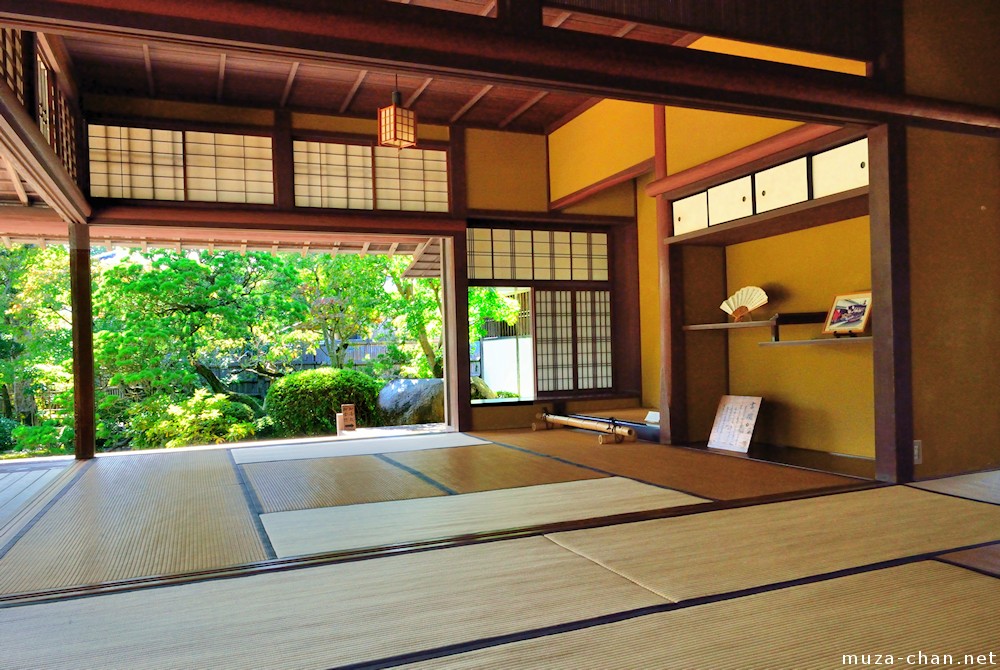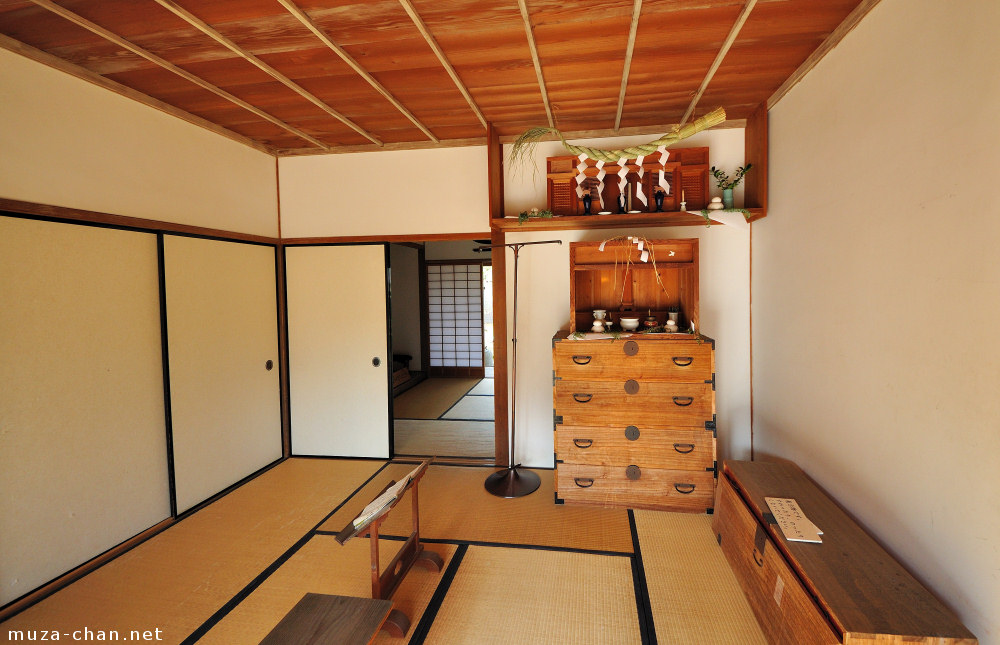Traditional Japanese Houses for sale in rural Japan
Table Of Content

The bigger the house, the less can be spent per square foot within a given budget. Big cheap houses often haven’t had much time spent in their detailing, and they just end up being cavernous, bland, and soulless places. For this reason, we recommend building the smallest house that will provide the spaces you require. Smaller, meticulously done houses are what most people come to us for. Our work is somewhat more expensive than standard housing because it requires more careful labor, but we can work with you to try to meet your budget. We have overseen the design and construction of structures as simple as elegant garden seats and gates to projects as complex as multi-million dollar houses, board rooms and executive suites.
Styles and Interiors of Traditional Japanese Houses
Gotta Catch These Pokémon Reimagined Through Stunning Traditional Japanese Craft Techniques - Smithsonian Magazine
Gotta Catch These Pokémon Reimagined Through Stunning Traditional Japanese Craft Techniques.
Posted: Thu, 10 Aug 2023 07:00:00 GMT [source]
The en-bashira are the posts or pillars at the outer edge of the veranda that support the veranda eave purlin. Among foreigners moving to Japan many choose to buy and restore these quickly disappearing homes for their own. Most Japanese prefer modern homes with amenities to make life easier. The Gallery hosts two types of exhibitions – traveling exhibitions and exhibitions original to JAPAN HOUSE LA. Traveling exhibitions rotate between all three JAPAN HOUSE galleries located in Los Angeles, London and Sao Paulo. The tokonoma does not serve a functional purpose but, rather, bows to the aesthetic.
Interior Elements in Tradition Japanese Houses
Gorgeous Pokémon x Kogei art exhibit combines Pokémon creatures with traditional Japanese crafts - SoraNews24
Gorgeous Pokémon x Kogei art exhibit combines Pokémon creatures with traditional Japanese crafts.
Posted: Mon, 04 Dec 2023 08:00:00 GMT [source]
However, there are usually very few internal walls inside a traditional Japanese home. Instead, rooms are sectioned off by sliding partitions called “shoji” and “fusuma.” This gave the interior a huge amount of flexibility and allowed kominka to be incredibly pragmatic and multifunctional. By sliding open the shoji or fusuma, a room could double in size or suddenly have a different shape, opening it up for an entirely different use. Japanese houses didn’t use historically use glass, resulting in some interesting methods of natural lighting.
Engawa
These items were often made of unusual wood or bamboo and might be made more elaborate in design and decor using lacquer and gilding. The sitting room (zashiki) was first seen in the homes of samurai who, as members of the upper class, were required to give audiences to their vassals and officials. For the same reason, one area of the room's floor may be slightly raised (jodan-no-ma).
Related Articles
The ōmune is the main ridge of the roof, the highest section of the house. Once the post and beam framework of the house is completed and the ridge beam finally put in place, a jōtōshiki or ridge beam-raising ceremony is held to bless the house and pray for its safety. Located in the heart of Kyoto, Kondaya Genbei is an excellent example of an elegant Kyoto-style machiya, or merchant’s townhouse. It was established in the 1730s and has since served as a residence and a shop where kimonos and obi sashes are crafted and sold. The prosperous business is presently run by the tenth generation owner, Genbei Yamaguchi, who is also a kimono designer himself.
The home was dismantled and moved to its present site, where it was reassembled and restored to its original state. The irori, an open, sunken hearth set within a timber floor, was once a standard fixture in Japanese farm houses. The wide veranda (engawa) has been lacquered to protect the wooden floor from rain. Fifteen sliding storm shutters (amado) can be taken out of their closet located at the end of the veranda, and pulled into the rails to protect the large drawing room from cold, rain and snow.
In traditional houses, rooms are measured by how many tatami mats fit inside, such as 4.5 jo or 6 jo. If you're interested in Japanese culture, you probably want to know about traditional Japanese homes. Historically, architecture in Japan was influenced by Chinese architecture. Traditional Japanese homes are called Minka 民家, "house of the people".
What is a typical project timeline? ⌄

An engawa is a place on the edge of a room that is either a hallway (closed on all sides) or a porch (open on one side) that has a wooden floor. It is a great space to enjoy the fresh air regardless of the weather. Tatami mats also have their own units of measurement, written with the same character put read as jo.
Examples of Japanese House Floor Plans
To fulfil that ideal, the design and building phases need to be part of an integrated whole. As centuries of tradition have shown, that all depends on entrusting the process to the carpenter-an artisan with a deep, far-reaching familiarity with wood and a physical intuition of the composite structure. After designing the building, the carpenter’s job is to craft the work in complete accordance with the laws of nature, mark the lumber with care, and build the structure. With that sense of honest humility toward nature, the carpenter represents a lifeline to traditional construction methods-and the singular source from which exquisite, captivating wooden buildings can emerge.
There are common elements in the interior of traditional Japanese houses from building materials to room dividers, and even special areas in the house. Columns make it a little more difficult to perfectly place tatami mats, but with careful planning, this style makes it a little better. The kamoi are the lintels above openings for sliding fusuma or shōji door panels. In sections of wall without any door openings, decorative horizontal timbers called tsuke-kamoi are added to continue the line of the kamoi beams right around the room. A ranma is a decorative open panel in an interior upper wall between the kamoi lintel and the ceiling, that allows light and ventilation. Kōshi-ranma consist of a simple lattice panel, while shōji-ranma are small sliding panels that can be opened and closed.
By maximizing the space and constructing implements that act as dual-purpose furniture pieces, Minka’s are able to act not only as a comfortable living space but also as a functional and practical living space. One example of this would be utilizing large glass walls to allow for natural lighting instead of investing in many unnecessary light fixtures. Because of this unique approach, there are several features exclusive to Japanese housing that you wouldn’t otherwise recognize in western architecture. With that said, Japanese design and architecture have become a popular trend in recent years in the western world, with more and more individuals emulating their homes after the Minka tradition. This traditional style of Japanese housing, otherwise known as Minka, is a mastery of architecture. Blending modern trends with traditional nods to Japanese culture, the style of these Japanese houses is simply stunning.
Another common feature of traditional Japanese homes is Fusuma’s, another type of sliding wall. Instead of diffusing light, a Fusuma allows for a practical, functional, and totally customizable way to transform a space. A Shoji is, at its most basic, a sliding wall of sorts, constructed with translucent paper instead of window glass. This not only provides homes with a customizable space but also a means of enjoying natural light without the excessive brightness one would experience through a typical glass window.
That’ll leave you with a clean, fresh mat that looks brand-new again. Exposure to the sun is the main reason why tatami changes its color, and to Japanese people, this sight is familiar to pretty much every Japanese person and an iconic symbol of how years go by. The interior of kominka were deliberately designed to be highly multifunctional in order to play several different roles.
It is common to hang them outside to air on sunny days, making them fluffy and comfortable to doze on. It is said that Japanese houses are built to allow breezes to pass through and cool residents during the stifling heat of summer. Conversely, though, this makes winter a cold, uncomfortable time even when indoors. Filling a hot water yutanpo bottle is one way to stay warm at night, while heaters or kotatsu tables are necessary during the daytime. The tatami mat is one of the most essential features in a traditional Japanese house. Before delving into varying floor plans, it’s critical to understand the importance of tatami mats in a Japanese home.
Tatami mats are twice as long as they are wide, and measure 3 feet by 6 feet. As a Result – The triangular shapes that these supports have provide more strength than the right angles typically used in support structures. This method only used two beams that were fitted together in the middle forming an X, with one vertical post at each end of the beams. In Japan, there is no one-size-fits-all answer to the question of what makes a house a home. The yokoza is the seat furthest from the kitchen area, where the head of the household would sit. The yosemune (hipped roof, centre) has four sides sloping down from the ridge to the eaves, and has no gables.
Comments
Post a Comment